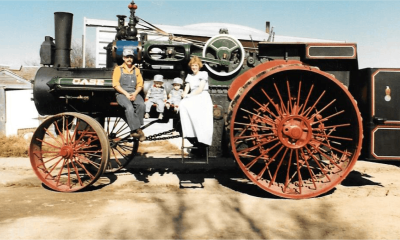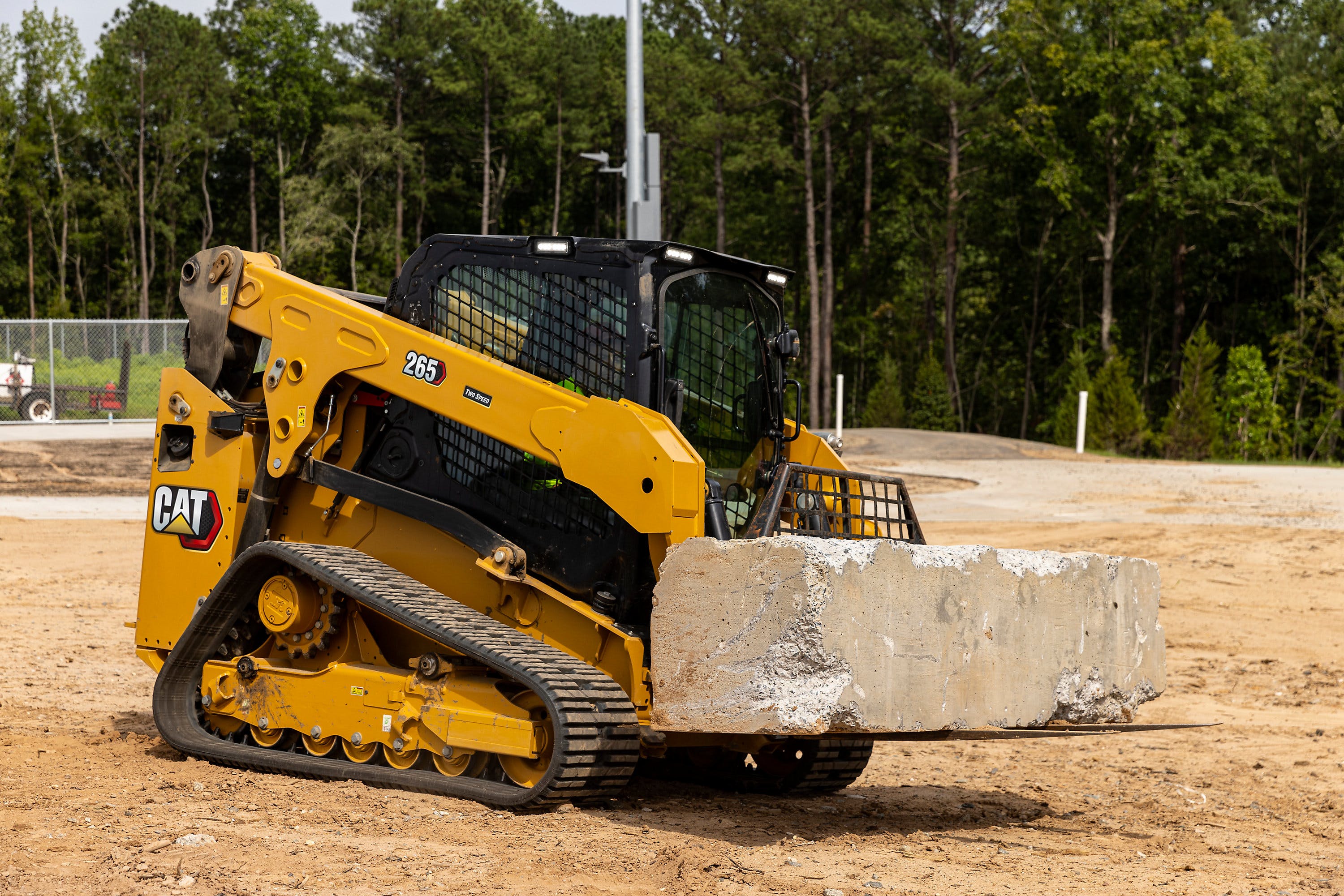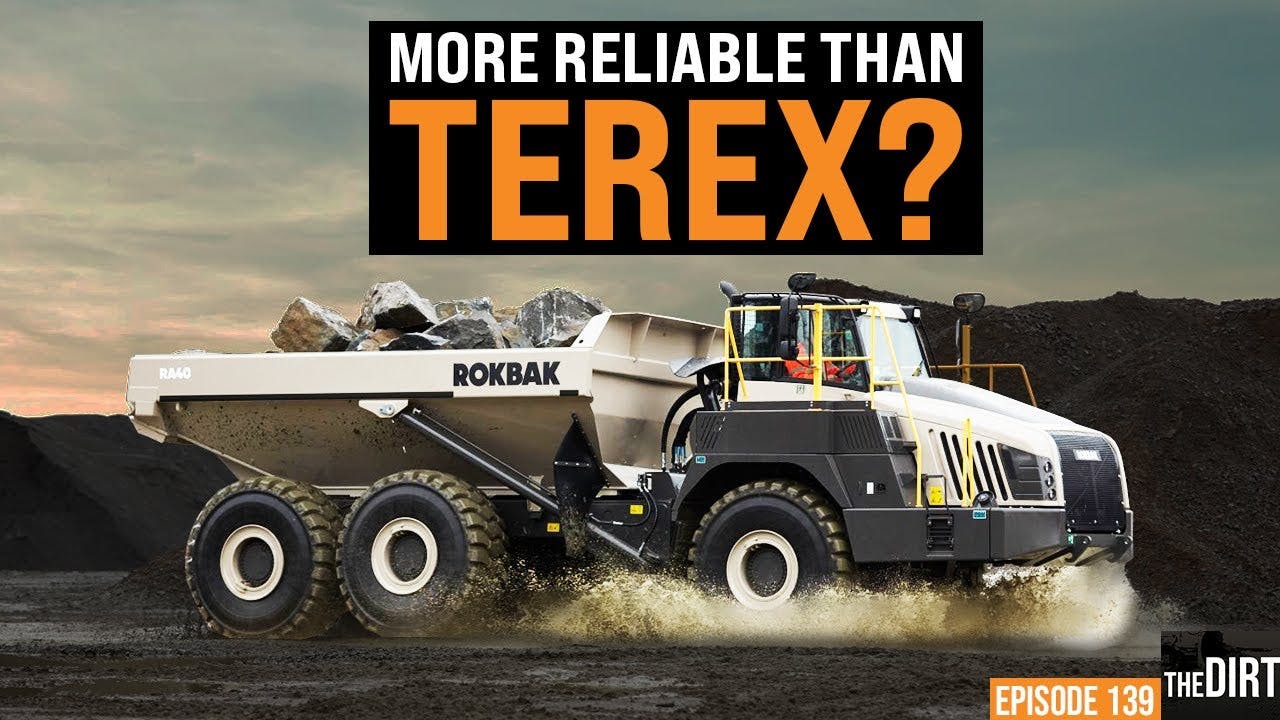Lance Taylor was on a mission to find Kubota’s first excavator.
The KH-10 compact excavator debuted in 1979, and finding one in 2020 was proving extremely difficult. But it was a search that Taylor, Kubota Tractor Corporation director of engineering, was determined would succeed.
It had to.
He had been given the responsibility of finding and restoring 15 of Kubota’s rare first models in preparation for the company’s 50th anniversary in the United States. The Japanese company, which formed in 1890, launched its U.S. subsidiary, the Kubota Tractor Corporation, in 1972.
“We did sell a lot of them,” Taylor says of the KH-10. “But as with most construction equipment, all those were used until they were scrapped.”
Eventually, he caught a break. After 18 months of hitting dead ends, he asked Kubota salespeople to check with their dealer contacts to see if they could locate a 1979 KH-10.
One came back with an exciting discovery.
“You’ve got to hear the story”
One of the salespeople alerted Taylor that a dealer in Pennsylvania actually remembered the first KH-10 D he sold.
“How’s that?” Taylor asked, a little skeptically.
“You’ve got to hear the story,” came the reply.
So Taylor called the dealer.
One day about 40 years ago, an Amish farmer had come in with a wad of cash and wanted to buy the excavator. But he had one condition.
“You have to deliver this to the back of my property by the trees in the middle of the night,” he told the dealer.
So the dealer did as he asked. On arrival, he was met by the farmer who was carrying a can of green paint and a paint brush.
He began painting the excavator green. Not wanting his neighbors to see he was using a modern machine, he kept the excavator camouflaged and well-hidden.
“It’s understandable why he remembers this so well,” Taylor says of the dealer.
The dealer thought the excavator was still on the farm.
And it was.
“This family still had it,” Taylor says.
They had also still been using it.
“It was in rough shape,” he says.
They were interested in making a deal, and they were shrewd negotiators. Taylor ended up giving them a brand-new Kubota KX71 compact excavator in exchange.
“I had no choice,” he says. “I couldn’t let that one go.”
 The KH-10 D before being restored by Luke Olson of Olson Tractor Restoration.Kubota
The KH-10 D before being restored by Luke Olson of Olson Tractor Restoration.Kubota
“Some of them are extremely rare”
Taylor’s search for the Kubota rarities started about two and a half years ago when the U.S. subsidiary began discussing what to do for its 50th anniversary, which is this year.
Taylor knew of two early tractors that were in storage and hadn’t been restored. He didn’t know anything about them. Before joining Kubota seven years ago, he had restored antique cars. “So I was interested in restoring those two units.”
His team of engineers was on board as well. He pitched the idea to company executives of finding and restoring six milestone tractors and equipment in time for the anniversary.
“We want a lot more than six,” they responded.
“So we settled on 15,” he says. “And then it ended up 19 by the time I was done. So it was a big project.”
The company already had only four of the models he wanted. The search began for the rest.
“We spent countless hours searching online auction sites, eBay – you name it – anything we could do to try and find some of these,” he says. “Some of them are extremely rare.”
A “priceless” find
 This 1987 PX2100 was a prototype model that has been restored after a lengthy search-and-rescue mission. It was on display at the Kubota Connect event in October in Grapevine, Texas.Equipment WorldAlong with the KH-10, possibly the rarest find was Kubota’s PX-2100, a radio-control mowing tractor that came out in in 1987 and soon disappeared from the scene.
This 1987 PX2100 was a prototype model that has been restored after a lengthy search-and-rescue mission. It was on display at the Kubota Connect event in October in Grapevine, Texas.Equipment WorldAlong with the KH-10, possibly the rarest find was Kubota’s PX-2100, a radio-control mowing tractor that came out in in 1987 and soon disappeared from the scene.
Not many were made, and they cost a whopping $25,000 at the time. “We think we only made a few dozen of those,” he says.
They were unique machines for their time, more of a test of Kubota engineering than a product expected to storm the market. It had a diesel engine, all hydraulics, four-wheel drive and four-wheel steering. And it was operated similar to a radio-controlled model airplane.
The tractors could also cause some confusion.
“They had a problem because it would be mowing on a hillside, and it would stop traffic because people thought it was out of control because there’s nobody on the scene,” he says. “So a lot of the owners actually built dummies, fake people, to sit on them while they remote-controlled them so the traffic wouldn’t get stopped.”
He sent out an all points bulletin to dealers with a wanted poster. A few promising leads were dead ends. Then he got a call from a dealer who thought he had seen one at Ohio State University.
After some emails between himself and university staff, Taylor learned they still had it. Taylor was curious as to how it ended up there.
“You gave it to us,” was the reply.
“It’s actually the prototype that we gave to Ohio State back in the ’80s,” Taylor says.
Ohio State had used it for a hydraulics control class.
“I’m glad you called me,” a professor told Taylor. “We had a professor come in and change up the class a couple of years ago, and he threw it in the scrap bin. I dug it out and stuck it over here in the corner.”
“So we’re very lucky to have it,” Taylor says.
The restorations
 The restored KH-10 D on display at Kubota Connect in October. The 18-horsepower excavator weighs 6,945 pounds and has a digging depth of 8 feet 2 inches.Equipment WorldThe KH-10 excavator, the PX radio-controlled mower and most of the other pieces Taylor acquired needed extensive restoration. With a deadline of two and a half years, Taylor and his team needed help.
The restored KH-10 D on display at Kubota Connect in October. The 18-horsepower excavator weighs 6,945 pounds and has a digging depth of 8 feet 2 inches.Equipment WorldThe KH-10 excavator, the PX radio-controlled mower and most of the other pieces Taylor acquired needed extensive restoration. With a deadline of two and a half years, Taylor and his team needed help.
Taylor contacted a friend who restores Allis-Chalmers tractors. The friend told him about Luke Olson, owner of Olson Tractor Restoration in Elmwood, Wisconsin. As luck would have it, not only is Olson a whiz at restoring old tractors, but he was once a Kubota mechanic.
“He does fantastic work,” Taylor says of Olson.
Olson restored 11 of the pieces, including the KH-10, which was his first excavator restoration project. It was also his most challenging job.
“I had never seen one that age before,” Olson says.
It was in rough shape.
“We overhauled the motor and took the subframe off, the tracks off,” he says. “I had it all the way down to the bare bones.”
 The KH-10 D was Kubota’s first piece of construction equipment introduced in the U.S.Equipment WorldFor Taylor’s team, the PX radio-controlled mower was its most challenging restoration.
The KH-10 D was Kubota’s first piece of construction equipment introduced in the U.S.Equipment WorldFor Taylor’s team, the PX radio-controlled mower was its most challenging restoration.
“It didn’t really even look like a PX,” he says. The engine and hydraulic systems were there, but modern controls had been put on it. It needed a lot of work, yet it had only been run about 70 hours.
“There were so many parts missing,” Taylor says.
Because it was a low-production machine, parts were difficult to find.
“I scoured Japan and all over for parts for it. And we couldn’t find a lot of stuff.”
So he bought two more PXs that were in much worse condition and used the parts from them to remanufacture the missing parts.
“I personally made dozens of parts for that machine,” he says. “I did all the fiberglass work on that one.” One of the engineers on his team repainted it.
“It was a big project to get that thing back to original,” Taylor says.
He believes it is the most valuable piece in the collection. It’s also unique – a prototype with no serial number. He’s not sure what it would cost to buy one today. He contacted a dealer in Canada who has a restored PX, and he wouldn’t accept any offer for it.
“In my opinion,” Taylor says, “it’s priceless.”
“My babies”
 Lance Taylor, Kubota Tractor Corporation director of engineering, at the controls of the restored KH-10 D.Equipment WorldTaylor is hard-pressed to choose a favorite out of the 19 restored Kubota classics.
Lance Taylor, Kubota Tractor Corporation director of engineering, at the controls of the restored KH-10 D.Equipment WorldTaylor is hard-pressed to choose a favorite out of the 19 restored Kubota classics.
The KH-10 and PX are definitely on the list.
There’s also Kubota’s first two tractors for the U.S. market, which came out in 1965. They were sold under the McCulloch brand – of chainsaw fame – for dipping a toe in the market.
“They approached McCulloch and said, ‘We’ll paint our tractors your color, put your name on them – can you distribute them?’
“They sent 100 of the D20s and 100 of the G12s over to the United States, and they sold out quickly. And that’s really what launched the brand in the United States.”
Then came the L200, the first Kubota-branded tractor in the U.S.
“By ’72, KTC was established, and it’s history from there,” Taylor says.
To honor that history and the company’s many milestones in tractors, mowers, excavators and UTVs, Taylor and his team have amassed an impressive collection of restored rare Kubota machines. They were recently on display at the Kubota Connect event in Grapevine, Texas, for its dealer network, and plans are in the works for a permanent display at the Texas headquarters.
Taylor has stories for each machine – the challenges of finding them and restoring them, as well as their place in the company’s 50 years in the U.S. market.
He made sure that all of them would be in top condition.
“I wanted them all running,” he says. “So they all do run.”
He’s operated each one of them.
“I like them all,” he says. “I’ve got stories for every one of them now, so they’re kind of like kids actually. …
“They’re my babies.”
Rare Kubotas in photos
Check out photos below of some of the highlights from Taylor’s search-and-rescue mission for Kubota’s milestone models in the U.S.
KH-10 D back in the day
 The KH-10 D, Kubota’s first construction machine on the U.S. market, in its heyday.Kubota
The KH-10 D, Kubota’s first construction machine on the U.S. market, in its heyday.Kubota
1965 McCulloch-branded Kubota D20 tractor
 This 1965 McCulloch D20 was built by Kubota and introduced as a test product for the Japanese company on the U.S. market.Equipment World
This 1965 McCulloch D20 was built by Kubota and introduced as a test product for the Japanese company on the U.S. market.Equipment World
 The D20 and its companion subcompact tractor the McCulloch-branded G12 sold quickly in the U.S., leading Kubota to launch tractors under its own brand.Equipment World
The D20 and its companion subcompact tractor the McCulloch-branded G12 sold quickly in the U.S., leading Kubota to launch tractors under its own brand.Equipment World
 Equipment World
Equipment World
1967 Kubota L200 tractor
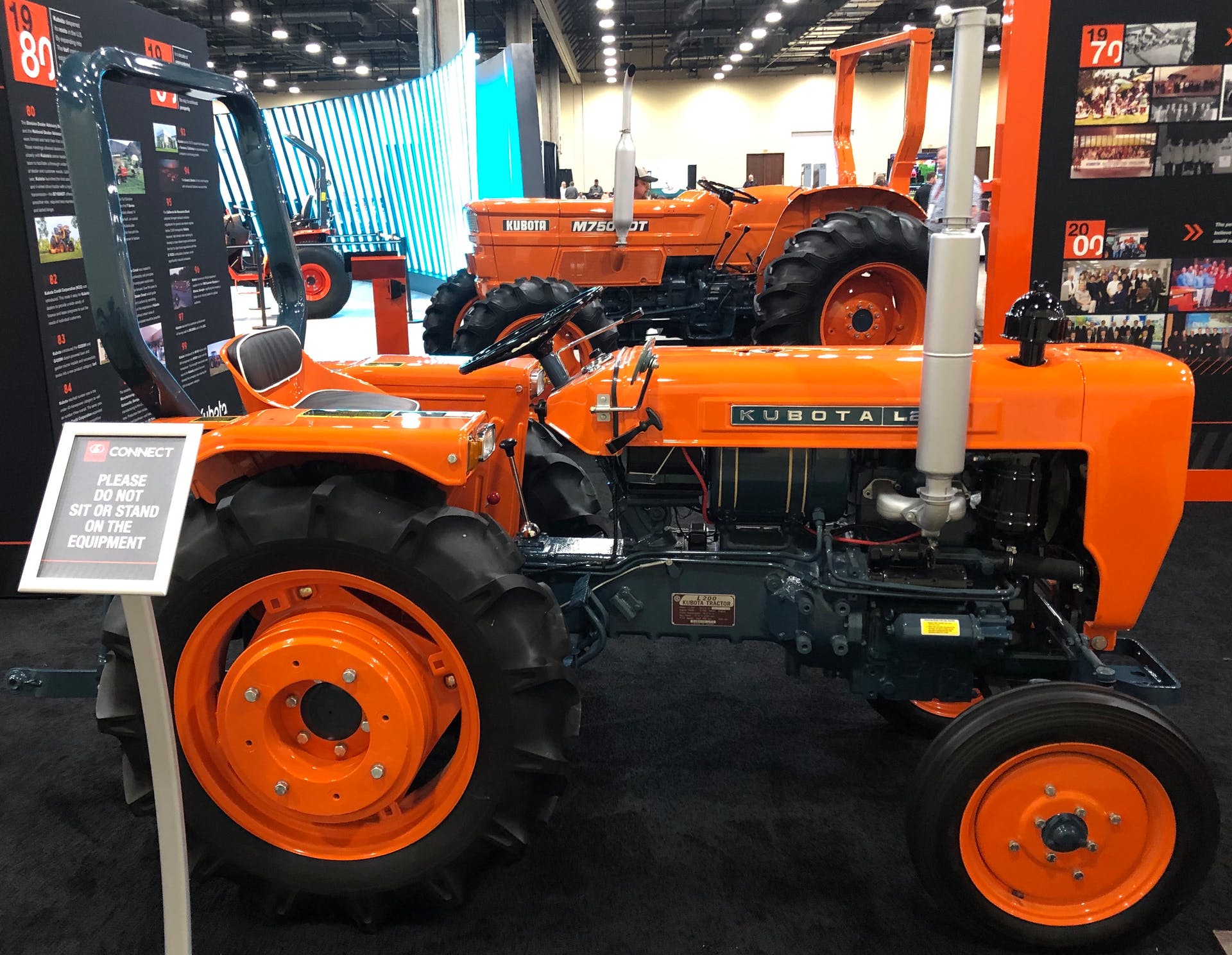 The 1967 Kubota L200 was the first Kubota-branded tractor for the U.S. market.Equipment World
The 1967 Kubota L200 was the first Kubota-branded tractor for the U.S. market.Equipment World
1976 Kubota L245HC tractor
 The 1976 Kubota L245HC tractor was a unique piece in that the steering was offset to the side to give the operator a better view of the seeder and coulter plow.Equipment World
The 1976 Kubota L245HC tractor was a unique piece in that the steering was offset to the side to give the operator a better view of the seeder and coulter plow.Equipment World
 Equipment World
Equipment World
 Equipment World
Equipment World
2004 Kubota RTV900
 Kubota’s first UTV, the RTV900, launched in 2004. This one had been outside its whole life and was covered in rust before Lance Taylor and his team acquired and restored it. They took it apart and sandblasted the frame and completely rebuilt it.Equipment World
Kubota’s first UTV, the RTV900, launched in 2004. This one had been outside its whole life and was covered in rust before Lance Taylor and his team acquired and restored it. They took it apart and sandblasted the frame and completely rebuilt it.Equipment World

 Business5 years ago
Business5 years ago
 Business3 years ago
Business3 years ago
 Tech3 years ago
Tech3 years ago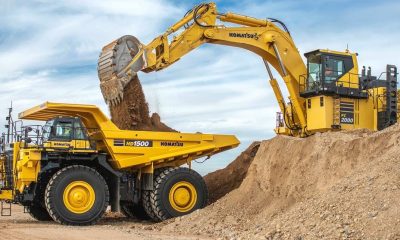
 Tech2 years ago
Tech2 years ago















